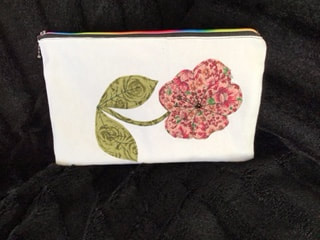|
March 2021 Zoom Meeting. OUr Favourite Things
|
|
Stack, Slash and Shuffle (or Whack and Stack) Technique
Irene used 6 x 10 inch squares. A layer cake is ideal for this. Remember, the number of cuts you make should be one less than the pieces of fabric and should leave you with, in this case, 6 shapes to shuffle.
Irene used 6 x 10 inch squares. A layer cake is ideal for this. Remember, the number of cuts you make should be one less than the pieces of fabric and should leave you with, in this case, 6 shapes to shuffle.
- Draw on your top square where you want to make your cuts. Everyone will be different and unique. Think how you can do this so you don't end up with awkard joins. when you reconstrust the square. See photo 1.
- Make your cuts - also photo 1
- Now stack. Leave pile 1 alone. On pile 2, move the top piece to the bottom. On pile 3 move the top 2 to the bottom,. Pile 4 - the top 3 to the bottom. Pile 5 - the top 4 to the bottom and on Pile 6 it's the top 5 to the bottom. Label these!! You now have 6 piles with a different fabric on top. Photo 2
- Now sew it all back together. Your finished block will be smaller than 10 inches. See Photo 3.
- Now square it up and arrange as you like. Photo 4
- If you want to make more than 6 blocks, making a pattern first is a good idea. Freezer paper can be useful here.
- Photos 5 and 6 show a couple of quilts, made using this technique.
Proudly powered by Weebly








